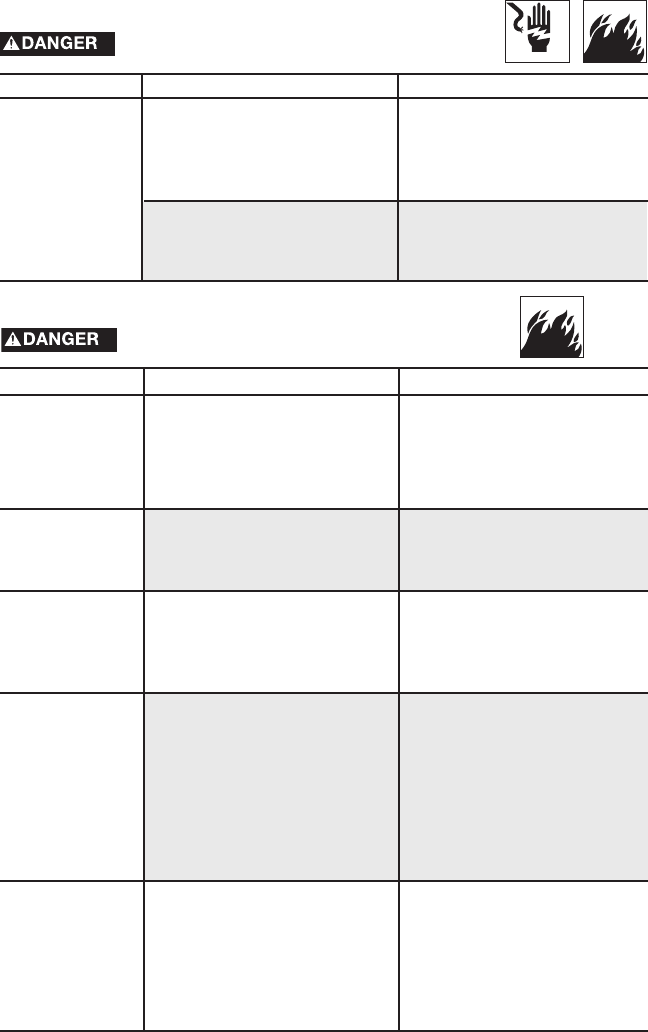
4- ENG
D28469
Operation of unit
when damaged,
or with guards or
panels removed.
Removal of guarding could
expose electrically charged
components and result in
electrocution.
Do not operate generator with
protective guarding removed.
Attempting to use the unit
when it has been damaged, or
when it is not functioning
normally could result in fire or
electrocution.
Do not operate generator with
mechanical or electrical
problem. Have unit repaired by
an Authorized Service Center.
RISK OF FIRE
HAZARD
WHAT CAN HAPPEN
HOW TO PREVENT IT
Improper storage
of fuel
Improperly stored fuel could
lead to accidental ignition. Fuel
improperly secured could get
into the hands of children or
other unqualified persons.
Store fuel in a OSHA approved
container designed to hold
gasoline. Store container in se-
cure location to prevent use by
others.
Attempting to
fill the fuel tank
while the engine
is running.
Gasoline and gasoline vapors
can become ignited by coming
in contact with hot components
such as the muffler, engine
exhaust gases, or from an
electrical spark.
Cigarettes, sparks, fires, or
other hot objects can cause
gasoline or gasoline vapors to
ignite.
Turn engine off and allow it to
cool before adding fuel to the
tank. Equip area of operation
with a fire extinguisher certified
to handle gasoline or fuel fires.
Add fuel to tank in well
ventilated area. Make sure there
are no sources of ignition near
the generator.
Operate generator in a clean, dry,
well ventilated area a minimum of
four feet from any building, object
or wall. DO NOT OPERATE
UNIT INDOORS OR IN ANY
CONFINED AREA.
Materials placed against or near
the generator or operating the
generator in areas where the
temperature exceeds 104° F. am-
bient (such as storage rooms or
garages) can interfere with its
proper ventilation features caus-
ing overheating and possible ig-
nition of the materials or build-
ings.
Sparks, fire, hot
objects
Inadequate
ventilation for
generator
Tampering with
factory set
engine speed
settings.
Engine speed has been factory
set to provide safe operation.
Tampering with the engine speed
adjustment could result in
overheating of attachments and
could cause a fire.
Never attempt to “speed-up”
the engine to obtain more per-
formance. Both the output
voltage and frequency will be
thrown out of standard by this
practice, endangering
attachments and the user.
RISK OF ELECTROCUTION AND FIRE
(Continued)
HAZARD
WHAT CAN HAPPEN
HOW TO PREVENT IT


















